► VW ID. Buzz review – the electric MPV
► Funky, practical and great to drive
► Prices start from £58,915
Forget the cynical ID.R with its painted on headlights, if Volkswagen’s electric ID range has a halo car it’s this – not Wolfsburg’s engineering/marketing project that will get pulses racing. The ID.Buzz is a car that prods the nostalgia buttons and tugs on the emotional strings unlike any other in the Volkswagen line-up. It’s the flower power camper for a brave new age – or the Mystery Machine for the sustainable generation.
We’ve driven it in Copenhagen and at length in the UK, and few cars have attracted more attention. Is it any good? What’s the starting price? When can I get one? Is petrol, diesel or an electric car? Is it any good? Keep reading for our full verdict.
First impressions
UK prices for the Volkswagen ID. Buzz start at £58,915, but be wary of spiralling costs if you get too busy with the options and spec levels. The electric seven-seater MPV landed at UK dealers in summer 2023, but the waiting list may already be stretching into 2024 and beyond. So there’s excitement for sure.
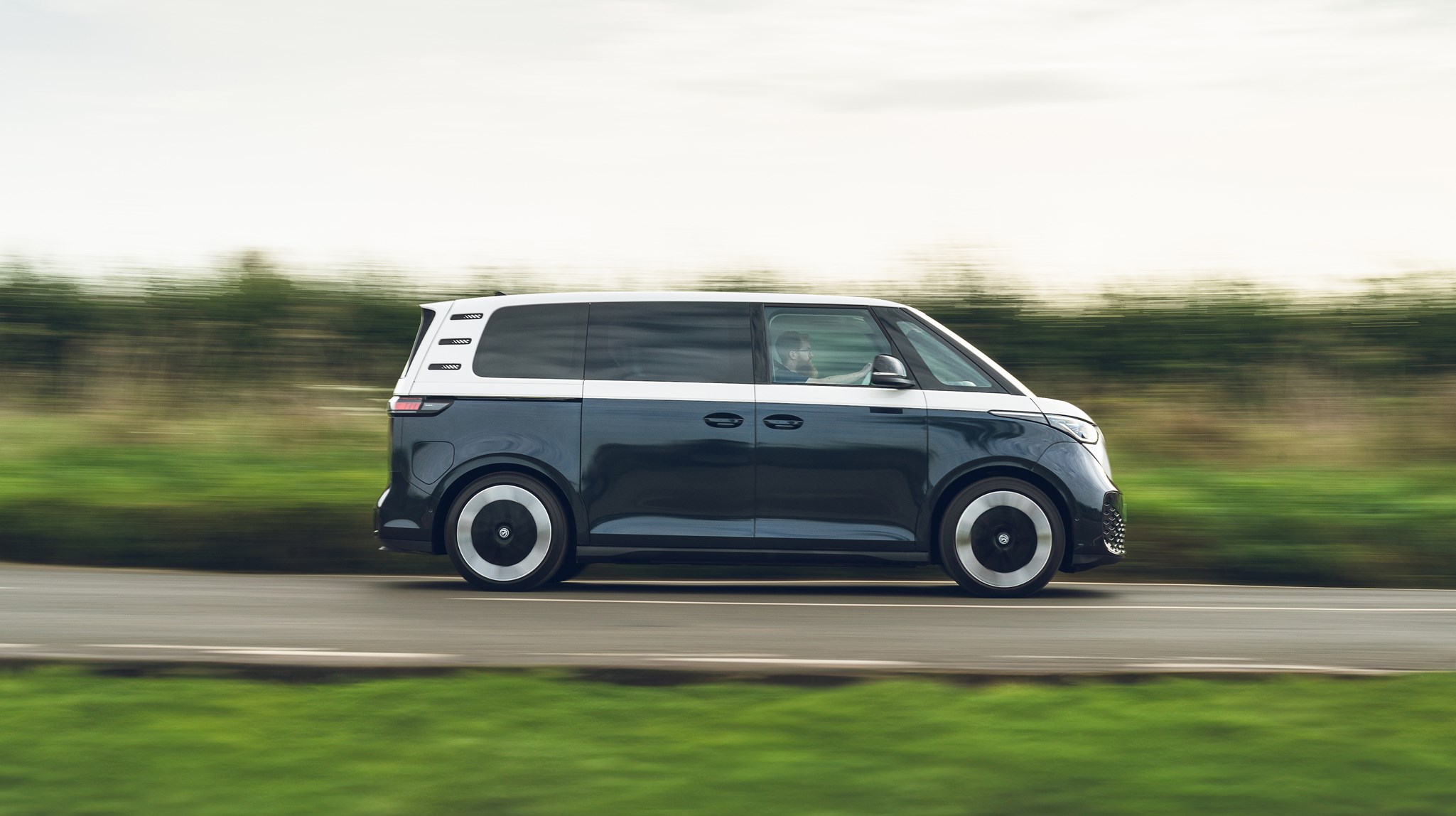
However, when we first drove a prototype version of the ID. Buzz, we were disappointed. The partly camouflaged car just wasn’t there yet in terms of perceived quality, chassis fine tuning, vehicle dynamics and software integration. Fast forward to production and it’s a much more complete vehicle.
There’s still some DNA from its great ancestor – the 1950 T1 Beetle-based original microbus – with the electric metamorphosis still meaning the new Buzz has its motor strapped between the driven hind legs. Even so, the Buzz outweighs the T1 by the factor of two and a half.
It’s MEB underneath, right?
Exactly, giving some rather familiar powertrain and performance stats for those who have been paying attention to VW’s ID car rollout over the last couple of years. There’s just one version available, with a single 201bhp e-motor and power coming from a 77kWh battery pack.
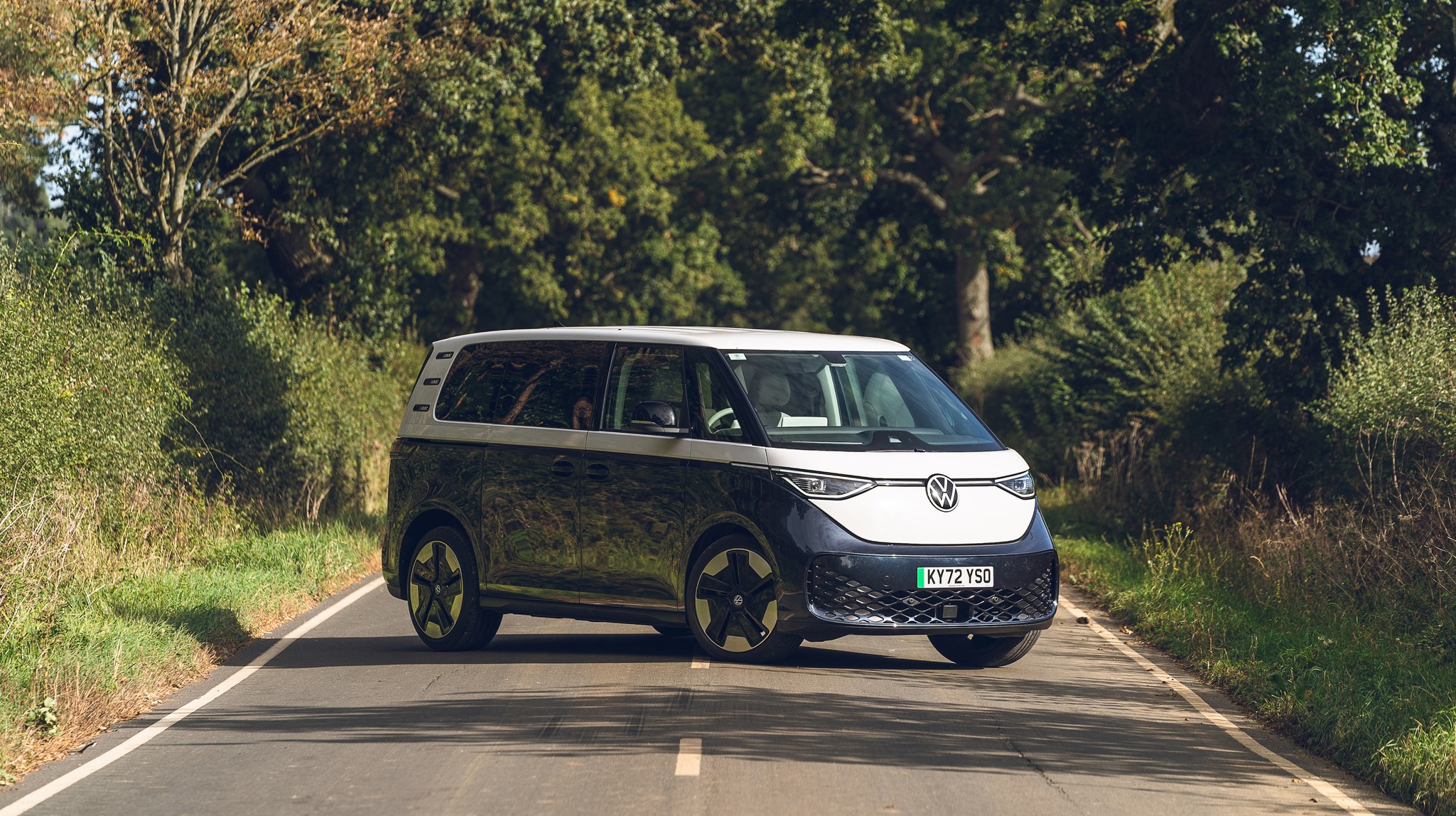
VW is going to release the long-wheelbase seven-seater which will again be available as Buzz and Buzz Cargo. A full-length glass sunroof is among the most noteworthy new extras. Later we also expect to see the first of several 4Motion AWD versions. The most powerful iteration is rated at 340bhp, sources say, and while its top speed will increase to 100mph, the acceleration time should shrink to 5.9sec. According to those in the know, there is a 400bhp GTX complete with 92kWh energy pack and a beefed-up rear axle in the works for model year 2025.
Let’s stick with this one for now – how does it drive?
Some would describe the performance as adequate; others may consider it lacking. At any rate, the cool people or cargo mover can accelerate in 10.2sec from 0-62mph. The price you pay for the considerable weight and the trucklet-like drag coefficient of 0.28 is a 90mph top speed restricted by reason.

Most EVs take your heart by storm thanks to the instant torque delivery and the punch that follows until the motor runs out of revs, the transmission runs out of legs and the speedometer runs out of digits. The ID. Buzz is somewhat different since it musters only a modest 229lb ft which is not quite enough to show off when the lights turn green, and not near enough to reel in busy B-roads with a vengeance.
Although the single-speed transmission does its best to turn grunt into traction, the massive weight invariably puts spokes in the MPV’s polished alloy wheels. But not to worry: simply reset the expectation meter inside your head, let cruise control cool off excess ambition, and allow maintaining the flow to become the new favourite way of driving.
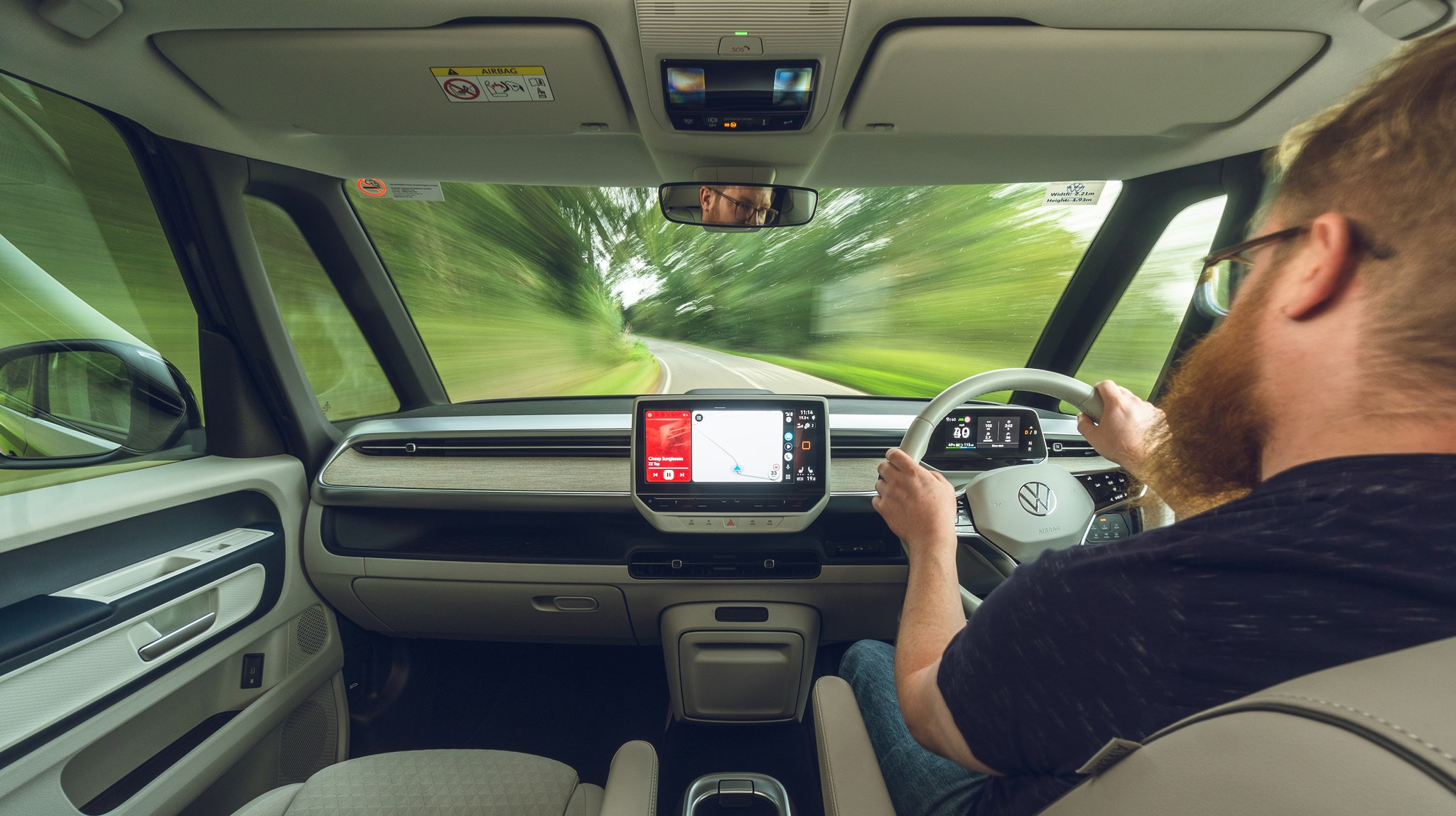
Does it drive like a van?
Despite the large diameter 20in wheels shods with low-profile rubber, the long wheelbase, substantial weight and spot-on spring and damper calibration yield a perfectly compliant five-star ride. While the unladen front suspension acts as subtle touchy-feely pre-filter element, the rear axle soaks up vagaries as if supported by a pair of invisible air springs.
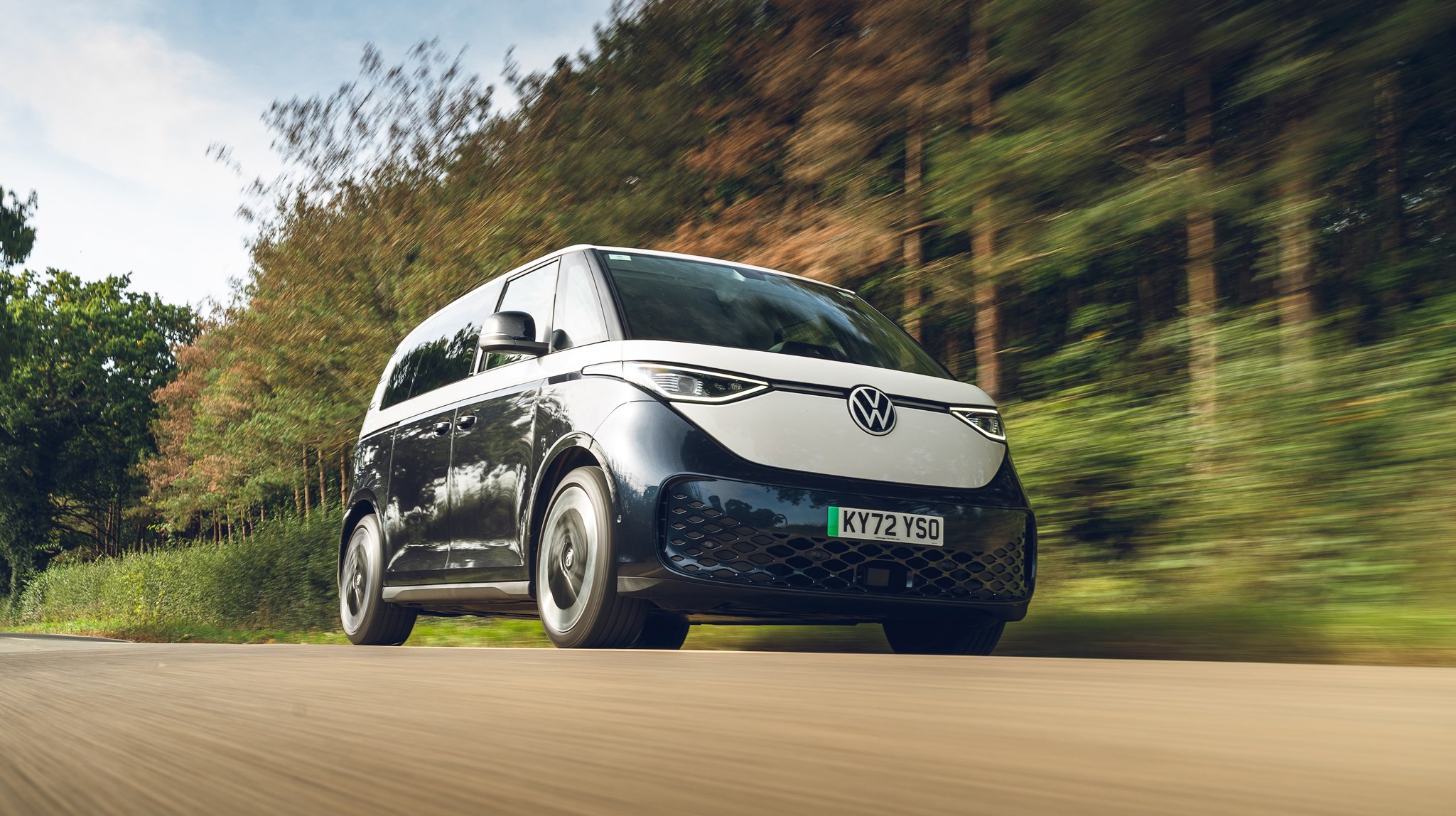
The most noteworthy dynamic virtues of our chic zero-emission crowd magnet are the aforementioned ride quality supported by adjustable dampers, the quiet cabin virtually devoid of wind and road noise, as well as the commendably tight turning circle of 11.9 metres which is not bad for a 4712mm minivan sporting a long 2989mm wheelbase.
Thanks to the reasonably quick and nicely progressive steering, the big bold battery-driven box is surprisingly manoeuvrable around town and pleasantly involving beyond the city limit. The suspension features MacPherson struts up front and a multilink arrangement in the rear. The ventilated XXL front disc brakes are complemented by rear drums which don’t look great on the spec sheet but are perfectly sufficient on the road.
How useful is it, really?
Before we even address the touchscreen elephant in the room, it’s worth briefly talking about the fit and finish of the Volkswagen ID.Buzz. Although it doesn’t always handle like a van, inside it feels a little like one. Sure, the design is funky and fresh – from the drivers’ seat it’s a bit JJ.Abrams’ Star Trek meets a Ford Transit – but the materials feel utilitarian to put it bluntly. Plastics feels robust and wipe clean instead of premium, and everything is fit for purpose rather than luxurious. Have a touch of the dash or a door card and the Buzz is telling you ‘this is an impressive people mover, not a private jet.’

Now let’s move on to that floating screen in the dashboard. You may have read or heard a lot of bad things about the VW ID infotainment system, and even one and a half years after the premature launch of the ID.3 the semiconductors are indeed still wing-suiting from bug to error.
But certain digital wizardries are of course real assets. Take for instance Park Assist Plus which does not only memorise the last 50 metres covered at low speed including eventual changes of direction, it can also retrace the car’s steps even in confined spaces when asked to do so, and that includes steering, accelerating and braking – a bit like BMW’s Reversing Assistant.
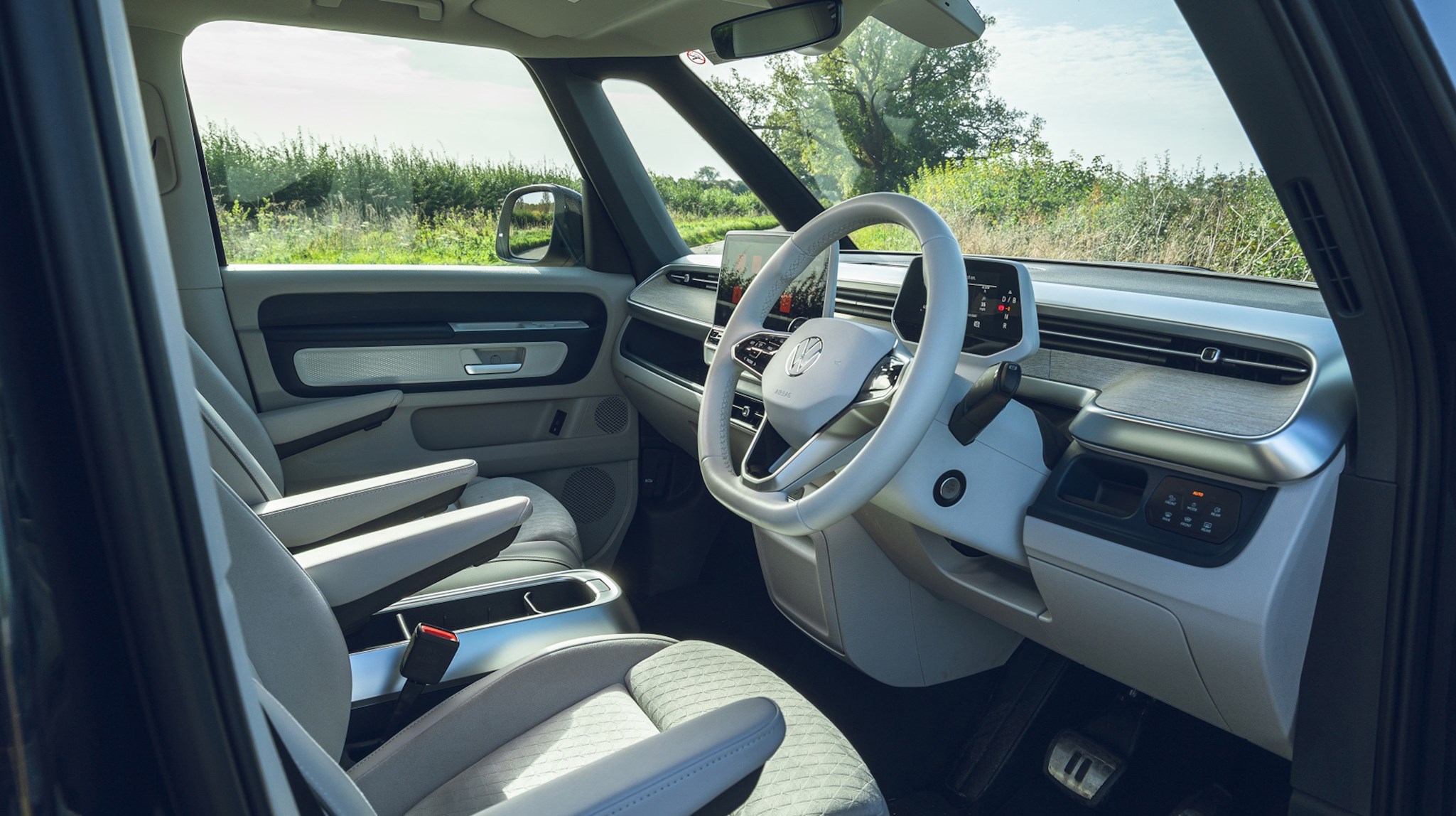
Since there are no shift paddles, recuperation is governed by the chosen driving programme. In Drive, lift-off decelerates the Buzz at a casual pre-set rate. One more twist locks the black box in Brake where up to 100kW of energy can be regained. While the latter mode relays the controversial one-pedal feel, making full use of the sometimes considerable momentum via on-demand coasting is sadly not an option, which may be worth a second thought when compiling the next over-the-air software update.
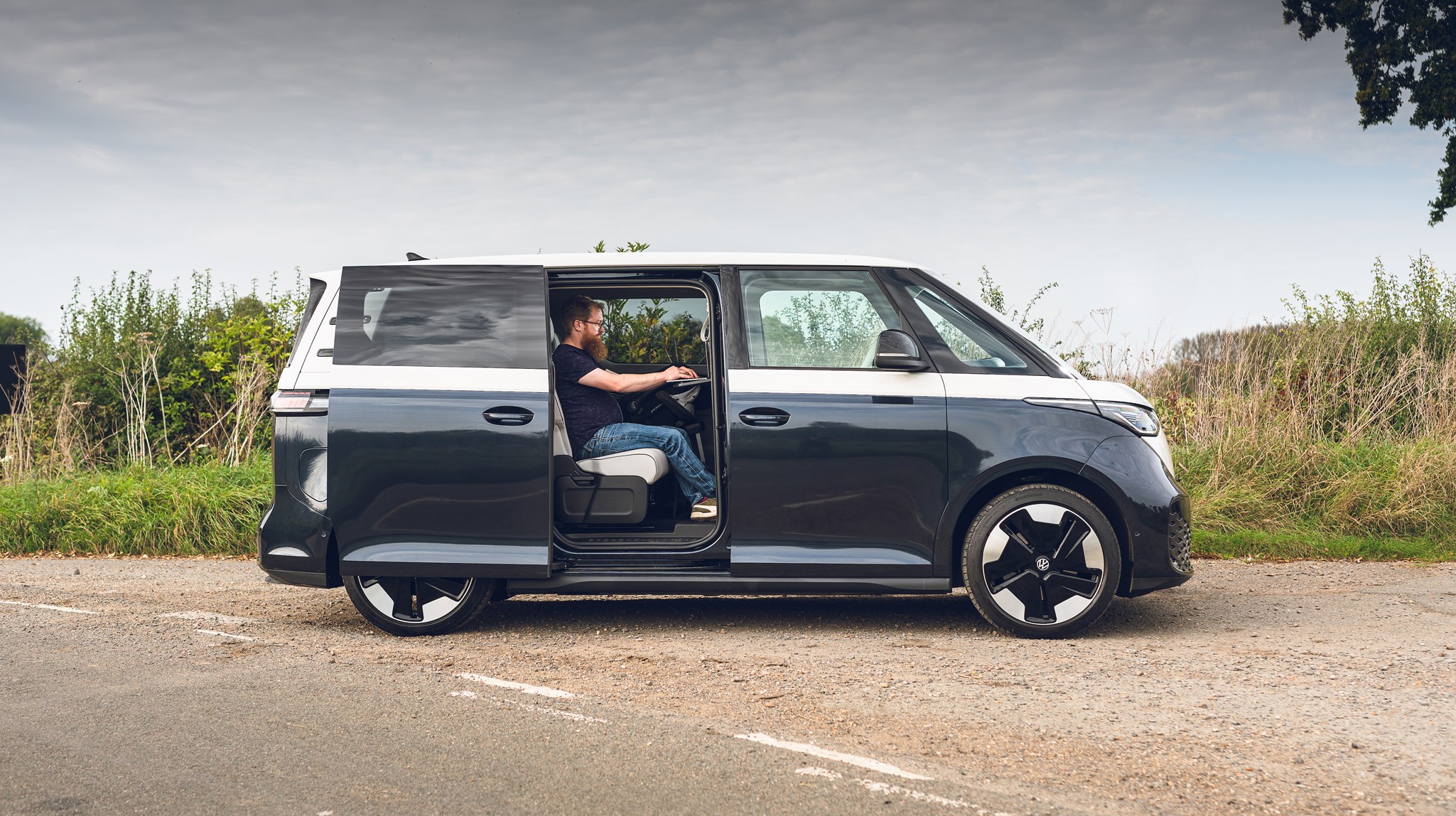
Another big bonus point is the abundant cabin space. The rear seats can for instance be individually pulled forward by up to 150mm in case 1121 litres of intelligently subdivided cargo space won’t do. More important still is the royal roominess in the first row where one could swing a dino without compromising the selected seating position. The two standard power-operated sliding doors provide easy access to the elevated rear passenger compartment.
VW ID. Buzz: verdict
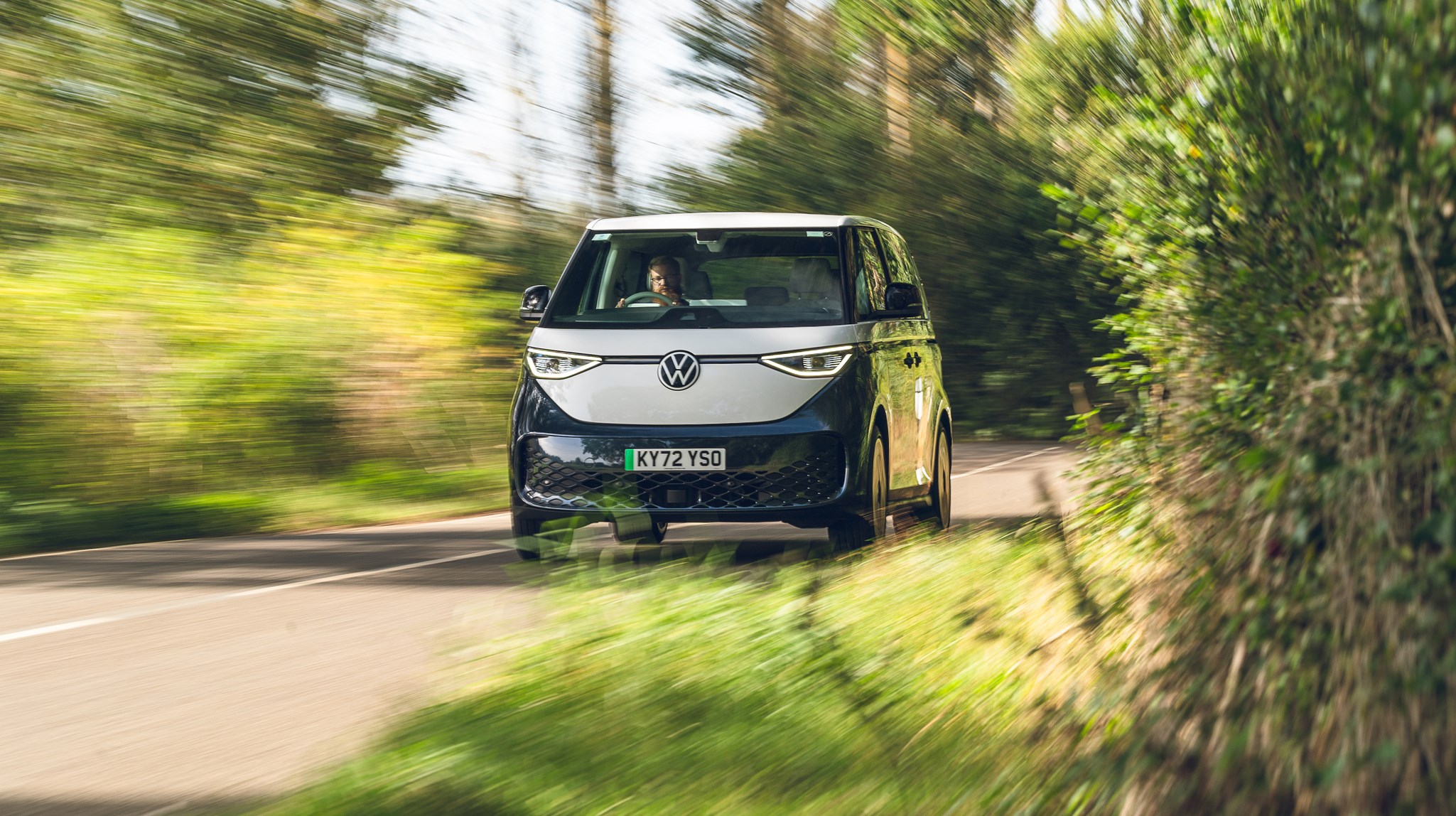
Its infotainment remains frustrating – a niggle that won’t be fixed for likely a few years yet – and it’s not exactly fast, but there’s no doubt about it: the ID. Buzz is a unique offering which fuses clever packaging, spot-on looks, up-to-date electric propulsion and a truckload of emotional brownie points at a relatively affordable tariff.
And it’s one hell of a crowd-pleaser wherever you go. If this unbridled spontaneous enthusiasm of passers-by is anything to go by, the 130,000 units VW intends to build annually from next year onward is no more than a drop in the bucket named desire.
However, the price is hard to ignore. UK prices start at £58k, which is par for the course for electric cars, but incredibly expensive if you leave powertrain out of the equation. That price tag means this car is currently only an option for electric early adopters, and much less feasible solution for most large families look for any type of people mover.